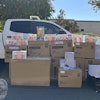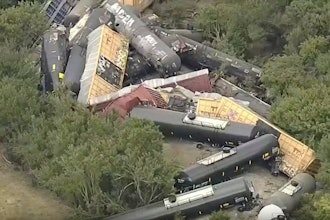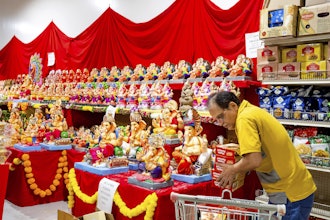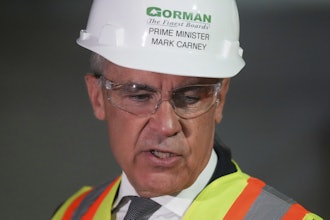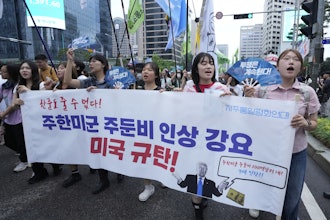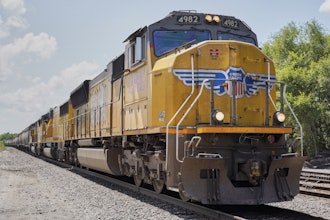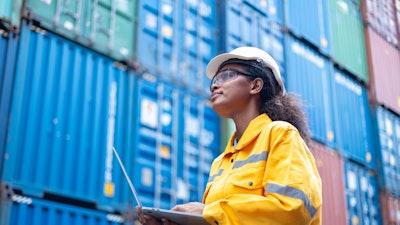
With tariffs on Chinese imports climbing to 60% for certain products, businesses are turning toward technology to get more proactive in keeping the lid on costs (without passing them onto those who fuel their businesses).
During a recent roundtable, one of Deposco’s customers said they are seeing an additional 35% tariff on a lot of their products, putting them in the 60% range.
The customer, whose business makes griddles and outdoor food accessories, said his retail partners aren't absorbing these costs either. They’re telling him straight up to figure it out because they are not taking any of it.
Will Consumers Pay the Price?
No one wants their customer to absorb the cost, either. But do you have another choice? Yes, you do.
As tariffs continue beyond a temporary hiccup, many are looking at new ways to proactively assess, respond and maintain inventory – versus costly band-aids and emergency scenarios.
Nearshoring and Reshoring
Other measures are being taken that also are not ideal, requiring businesses to reconsider delays in their warehouse technology upgrades. Tariffs, along with other disruptions such as capacity and the CHIPS Act – which is spurring some U.S. semiconductor expansion – have triggered a mass exodus from China.
But here's the catch – it's not as simple as packing up and moving next door.
Companies are scattering across Southeast Asia to Cambodia, Malaysia, Thailand and Vietnam. Others are exploring India, while some are even considering Mexico and Canada, despite new uncertainties there.
Moving operations doesn't guarantee savings. It could put you right back where you started from a cost perspective, especially for certain verticals that use highly tariffed goods like steel, which saw prices jump 25% across all countries just as one customer was getting established elsewhere.
What does guarantee savings is technology. Regardless of whether it’s tariffs or something else, having proactive intelligence will put you in control of the situation (and the many future disruptions sure to come).
Educational Development Corporation (EDC) uses adaptive supply chain solutions to cut total fulfillment costs by 77%. In general, we’re seeing businesses experience a 90% lift in topline growth alongside 99% inventory and order accuracy through these initiatives.
You may not need to make drastic changes. Some AI-enabled cloud innovations such as Supply Chain Intelligence (SCI), quickly show you where to find the next savings and new revenue opportunities to offset the things you can’t control.
Deposco has published two interactive tools to help you quickly calculate potential savings in your operations:
Don’t Neglect Quality
Here's something that caught many by surprise: China's manufacturing quality has actually surpassed many alternatives. Another company we talked with said that China is just producing really, really good quality stuff. Because factories in the U.S. just couldn't sustain this level, they simply don't exist anymore.
This creates a real dilemma - do you pay the tariffs for superior quality or accept potentially lower quality to save on costs? Again, you don’t have to choose.
Continuous Re-sourcing: The New Normal
Tariffs may have you constantly reassessing your supplier networks. If you’re thinking about building facilities across multiple countries, it’s important to understand the infrastructure gaps while maintaining quality control across diverse locations.
The financial impact ripples through every aspect of operations:
| Cost Factor | Impact |
| Raw Materials | 25% - 60% Increase |
| Transportation | Hidden Surcharges |
| Labor | Infrastructure Challenges in New Markets |
| Quality Control | Additional Oversight Needed |
| Working Capital | Tied Up in Larger Inventories |
Readiness Strategies
The message from Deposco’s panel is clear: tariffs aren't just a temporary hurdle - they're fundamentally reshaping global supply chains. Companies that adapt strategically will emerge stronger, while those that don't may find themselves priced out of the market. Some strategies being explored include:
- Locking in prices early, even if higher, because certainty beats uncertainty.
- Diversifying manufacturing across regions rather than betting on a single country.
- Assessing quality – but looking for assistance in vetting new suppliers.
- Having frank conversations with retail partners about cost sharing.
My advice
Get help proactively navigating the trade-offs of all of this – not as just a temporary band-aid, but as your go-to shield against future disruptions.
 Justin Stone, SVP of Customer Success, DeposcoDeposco
Justin Stone, SVP of Customer Success, DeposcoDeposco


